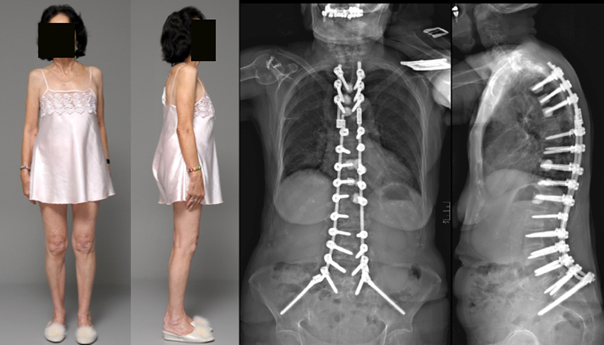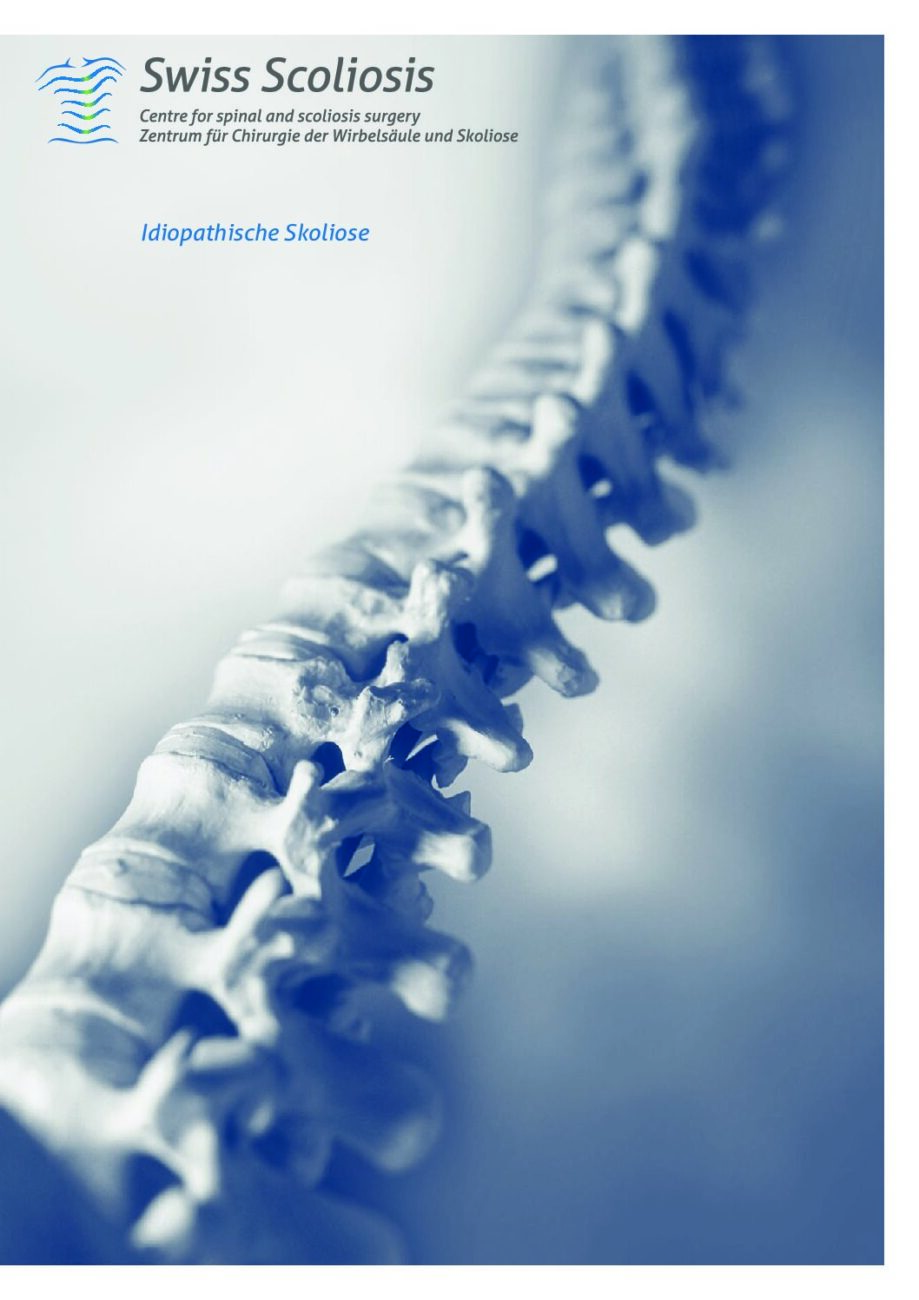Scoliosis (idiopathic & degenerative)
A scoliosis is a lateral curvature of the spine. The most common forms of scoliosis are:
- Idiopathic scoliosis
- Degenerative scoliosis
Idiopathic scoliosis
This type of scoliosis occurs in young patients. Its origin is unknown, hence the name “idiopathic adolescent scoliosis”. Girls are generally more likely to be affected than boys.
A conservative treatment using a corset is recommended in young patients with significant remaining potential for growth, if the scoliosis lies between 25° and 45°.
An operation is indicated, if the scoliosis worsens or the curvature rises above 45°. The operation can be performed from the back (dorsal) or laterally from the front (ventral).
Degenerative scoliosis
Contrary to the idiopathic, adolescent scoliosis mentioned above, this type of scoliosis is caused by attrition (degeneration). Distinctive degenerative changes at the intervertebral discs, vertebral joints and ligaments lead to a loss of stability. The spine loses its straight shape and collapses, causing a scoliosis.
Patients with a degenerative scoliosis suffer from back pain, caused by arthrosis of the vertebral joints, instability of the spine and leg pain due to spinal canal stenosis.
The conservative treatment includes physiotherapy, infiltrations and improvement of physical fitness.
An indication for surgery is made in cases of heavy, progressive scoliosis, strong pain in spite of conservative treatment and neurological failures.
During the operation, the narrowed spinal canal is widened, the scoliosis is rightened and the spine is stabilised with implants.






